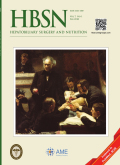When lifestyles sign
Nonalcoholic fatty liver disease (NAFLD) has a global prevalence of 25%, reflecting the global epidemic of obesity and diabetes (1). The onset and development of NAFLD are closely associated with dietary habits and lifestyle;consequently, lifestyle modifications including weight loss, increased physical activity, and dietary changes remain the treatment of choice for NAFLD. Even when drugs to treat non-alcoholic steatohepatitis will be available, lifestyle changes will remain an essential component of the therapeutic plan of these patients. In the last years, a strong association between lifestyle and hepatocellular carcinoma (HCC) has become evident (2-4). In patients with NAFLD, the annual incidence of HCC is 0.44 per 1,000 person/year and almost 50% of cases develops in a non-cirrhotic liver resulting in a diagnosis at an advanced stage with a worse prognosis (1,5). Nonetheless, the high prevalence of NAFLD with the relatively low risk for HCC makes a surveillance program cost-ineffective in non-cirrhotic patients (6).
8
2019-07-18(万方平台首次上网日期,不代表论文的发表时间)
共3页
69-71






